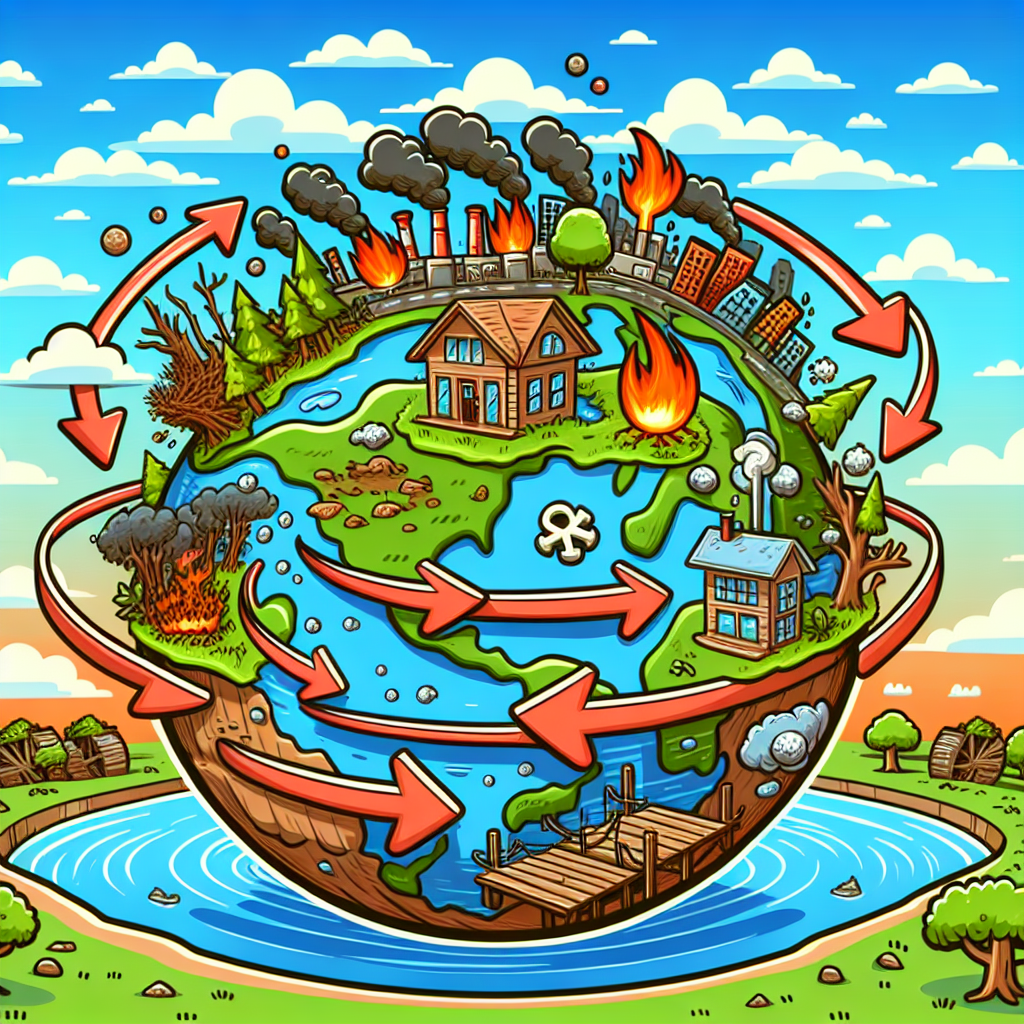
How Climate Change Feedback Loops are Eroding Earth’s Natural Carbon Sinks
In the fight against climate change, Earth’s carbon sinks — the vast expanses of forest, ocean, and soil that absorb carbon dioxide from the atmosphere — play a vital role. However, recent findings indicate that these crucial systems are under siege, suffering from the effects of climate change feedback loops that exacerbate environmental degradation, according to sources from New Scientist and ScienceDirect.
Understanding Carbon Sinks and Feedback Loops
Carbon sinks are the Earth’s natural absorbers, crucial for maintaining the balance of carbon in the atmosphere. However, with rising carbon emissions, these sinks are being overwhelmed, leading to increased atmospheric carbon dioxide levels. This increase is alarming because it sets off a series of feedback loops: processes that can amplify small changes, leading to significant impacts on climate systems.
The Science Behind Feedback Loops
Feedback loops occur when the effects of an initial process cause additional changes that further drive the original process. For example, as global temperatures rise, ice caps melt. This melting reduces the Earth’s albedo (reflectivity), causing more solar energy to be absorbed rather than reflected, thereby increasing temperatures further.
The Erosion of Carbon Sinks
Recent reports highlight how these feedback loops are leading to the erosion of carbon sinks. The ocean and forests are less capable of absorbing CO2 than they once were. According to a study covered by New Scientist, atmospheric CO2 levels have risen by an extra 15 parts per million since 1960, a testament to the declining ability of natural sinks.
Impacts of Decaying Carbon Sinks
This degradation has profound implications for global warming. As less carbon is absorbed, more remains in the atmosphere, accelerating climate change. This change leads to more extreme weather conditions, rising sea levels, and disrupted ecosystems.
The Role of Permafrost
The Arctic permafrost, once a carbon sink, is becoming a source of carbon emissions as it thaws and releases methane, a potent greenhouse gas. This transition is another vicious cycle, where warming leads to more warming, pushing climate stability further out of reach. More insights into permafrost feedback can be found in the Arctic Institute.
Ocean’s Rising Temperatures
Additionally, the seas are not as efficient in absorbing carbon due to rising temperatures and acidification. The feedback loop here is stark: warmer ocean waters sequester less carbon, elevating atmospheric CO2, and continuing the cycle.
Necessary Interventions
To mitigate these effects, global efforts must intensify, not only to reduce emissions but to reinforce and protect these critical carbon sinks. Conservation and restoration of forests, sustainable agricultural practices, and innovative technologies to capture carbon are essential.
Furthermore, advancing scientific solutions to understand and manage these feedback loops better is crucial. Enhancing our understanding of these dynamics is key to developing effective strategies for mitigating climate change’s most severe impacts (Royal Society).
Conclusion
The erosion of carbon sinks through climate change feedback loops presents a hidden yet immediate threat to environmental stability. Addressing this issue requires a concerted effort across scientific research, policy making, and global cooperation to protect and restore these natural buffers against climate change.



